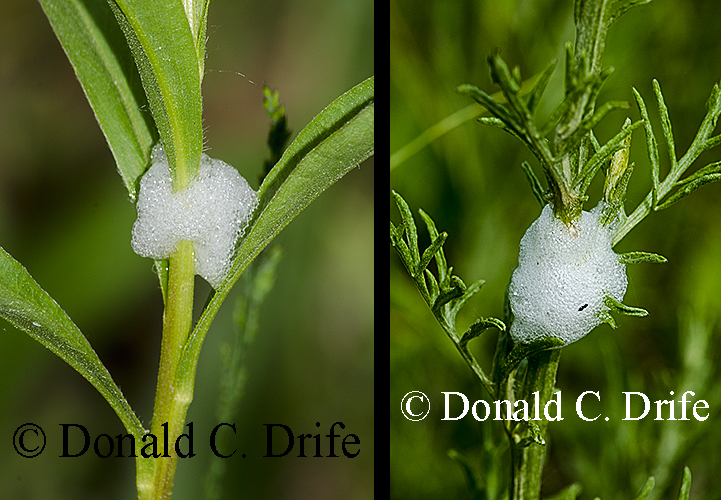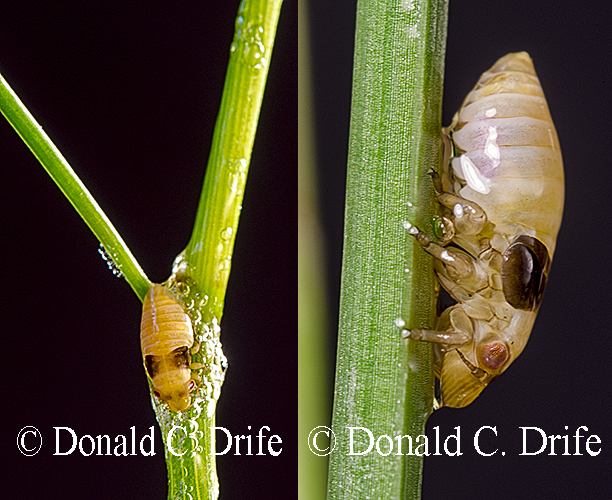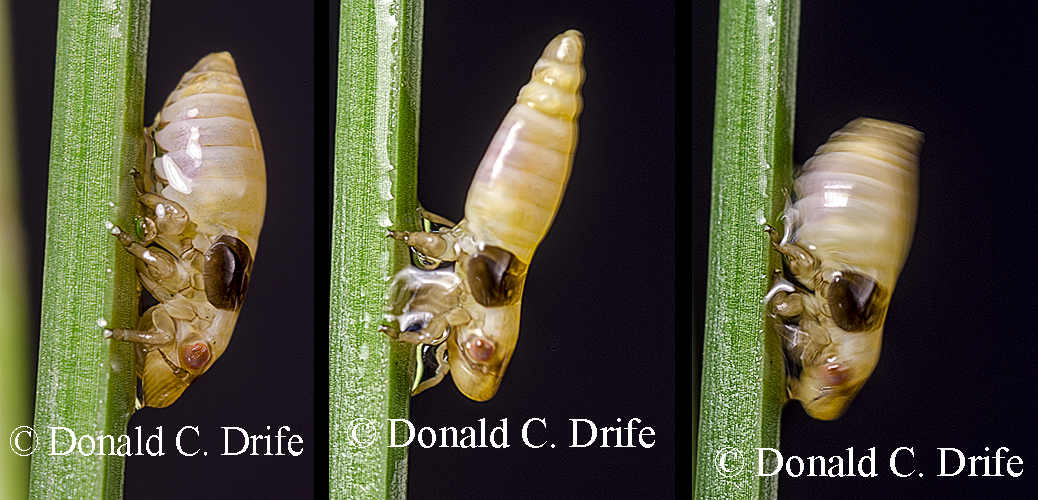Recently, I was asked what causes the frothy masses on the stems of some plants. They are formed by the nymphs of Froghoppers and are known as Spittlebugs. In North America there are approximately 30 species in seven genera and they are part of the family Aphrophora. Nymphs are 4mm [3/16 inch] long. Adult forms are inconspicuous and if I have seen them I did not identify them.
Spittlebugs drain fluids from the plant, combine it with a glandular secretion, and then blow it out of their anus. Foam is a combination of bubbles created when this mixture is blown out and added bubbles formed by the flexing of plates along the body of the nymph. Extending its body causes plates to separate, then they are rapidly contracted which whips the solution. This results in a foam that is stiff and difficult to remove. The foam protects them from predators and I believe shields them from sunlight. When under my photographic floodlights the nymph kept moving to the side of the stem opposite the light.
Spittlebugs feed on a wide range of herbaceous plants and also on pines (Pinus spp.) While the stem may become stunted I can see no real damage to the overall plant. Spittlebugs raise only one generation a year in the Great Lakes region. In mid-summer the foamy masses disappear as the nymphs mature.
Spittlebugs should be around for the next few weeks. Get out and look for them. You might find some in your own yard. If you remove the foam from one please do it only once. Nature is fascinating to study but we must do it without causing her harm.
Copyright 2017 by Donald Drife
Webpage Michigan Nature Guy
Follow MichiganNatureGuy on Facebook




Brilliant post, Don! Thanks!
This year we had spit bugs on our big pine tree in the front yard so bad that we got dripped on. Lovely to know that the foam is an anal secretion. Blech.